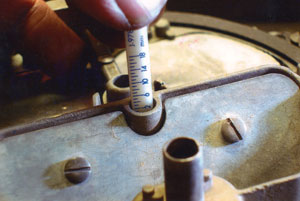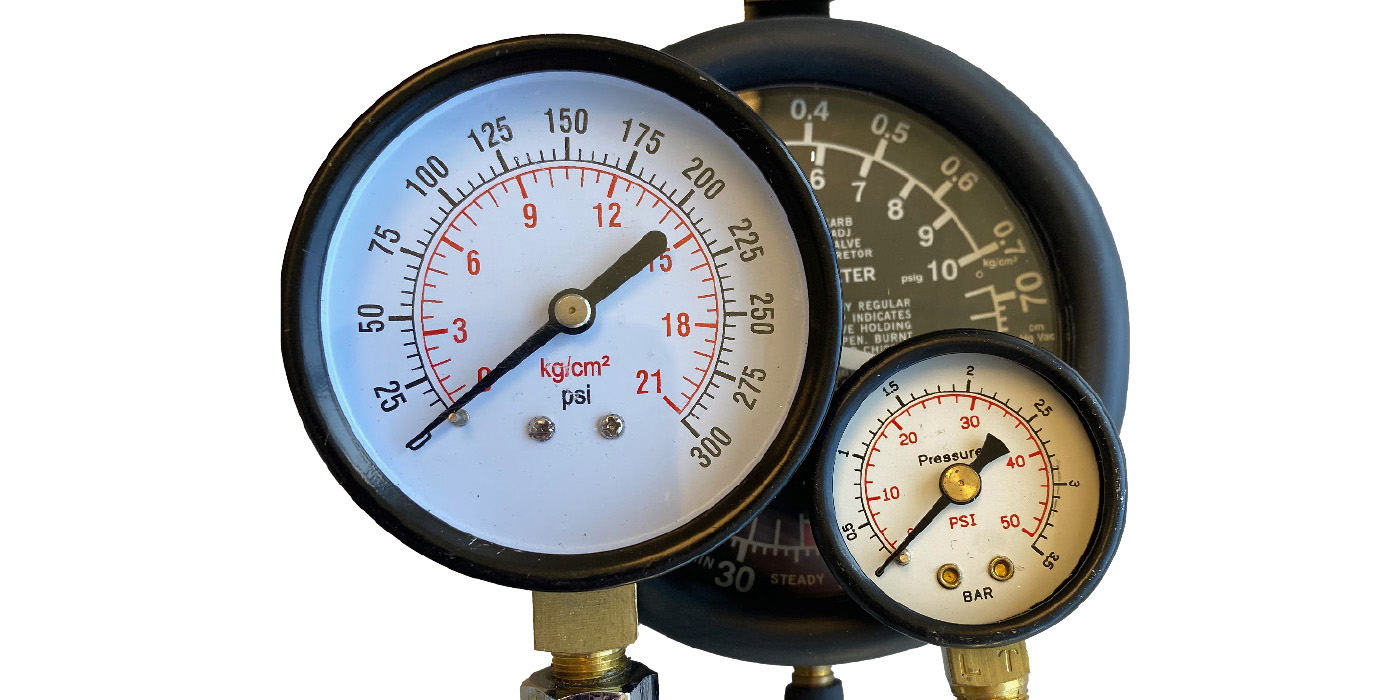
Introduced at the dawn of the emissions control era of the early 1960s, the “spread-bore” Rochester Quadrajet carburetor was considered leading-edge fuel delivery technology for the time. The “spread-bore” configuration consists of two small-diameter primary venturis designed to maintain high primary air velocities during normal driving for maximum fuel economy and low exhaust emissions. The two large secondary venturis are designed to produce maximum intake airflow and fuel delivery for maximum horsepower output.
Shortly after its introduction, mechanics unfamiliar with the principles underlying the design pronounced the Quadrajet a “junk” carburetor. Fortunately, drag racers competing in the National Hot Rod stock engine classes soon found that the carburetor responded well to various “tweaks” and the carburetor soon proved its worth in the performance market. Currently, the Edelbrock Corporation manufactures several different versions of the Quadrajet for performance applications. A number of aftermarket racing carburetor specialists also rebuild and customize Quadrajet carburetors to fit various restoration and performance applications.
Design Features
Unlike any other carburetor on the market at the time, the Quadrajet nestled its float bowl between its two primary venturis so that intake air would cool the float bowl assembly. The float bowl’s fuel volume is also kept to a minimum to maximize fuel circulation through the float bowl. Both features drastically reduce fuel percolation in the float bowl when underhood temperatures reach a high extreme.
The primary venturis feature dual-venturi fuel delivery nozzles designed to achieve maximum air velocity for accurate fuel metering and optimum fuel vaporization. A pair of metering rods is located in the primary float bowl meter fuel to the primary venturis. Idle mixture is adjusted by turning two idle mixture adjustment screws located in a separate throttle plate assembly. Some later models contain an adjustable metering rod stop that allows the rod height to be adjusted for a smooth transition from off idle to main metering. The adjustment is located under a plug located between the idle mixture adjustment screws.
The Quadrajet’s large secondary venturis are controlled by a lower set of throttle plates that are opened by a progressive linkage connected to the primary throttle shaft. The spring-loaded air valves located at the top of the secondary venturis are designed to maintain a constant depression or vacuum at the secondary fuel delivery nozzles as the secondary throttle plates open. This air valve assembly also contains a cam that coordinates the opening of the secondary fuel metering rods with the opening of the air valve assembly.
Although the Quadrajet was primarily designed for General Motors’s engines, the Quadrajet was also used on many Ford and Chrysler engines. Many Quadrajets were application-specific and were manufactured with exhaust-heated and electric chokes, right-hand and center fuel feeds, and a wide number of choke pull-off configurations. In short, few models of Quadrajets are identical because they were produced in an era of increasing exhaust emissions standards.
When restoring a collector vehicle, it’s important to make sure that the carburetor model number corresponds to the application. The fact that the carburetor resembles original configuration does not ensure that the carburetor will perform correctly. In most cases, the metering rods, metering rod spring, main jets and air valve adjustments are designed to correspond to specific applications. Because the secondary throttle is a constant-depression design, airflow specifications aren’t as critical on Quadrajets as on conventional carburetors.
In addition, some late-model Quadrajets were configured to only partially open the air valves or secondary throttle plates on small-displacement engines such as the Chevrolet 305 cubic-inch V8 engine. Such a carburetor will not perform correctly on a larger displacement engine.
Last, some Quadrajets were built with an altitude compensation aneroid capsule located opposite the accelerator pump assembly. These aneroids should not be adjusted or tampered with. A computer-controlled, feedback version of the Quadrajet was also produced during the 1980s. Because only a few of these carburetors are on the road today, suffice it to say that a few special tools available from aftermarket tool suppliers are required to adjust the primary metering rod height and travel during a rebuild. A common ignition point dwell meter set on the six-cylinder scale and attached to the green connector at the carburetor wiring harness can be used to adjust the idle fuel mixture. A scan tool may also be used to indicate metering rod solenoid dwell. Idle dwell times generally run best at 30°. Most of the basic electronic inputs are familiar to modern driveability technicians, so we’ll leave feedback carburetor technology at that.













